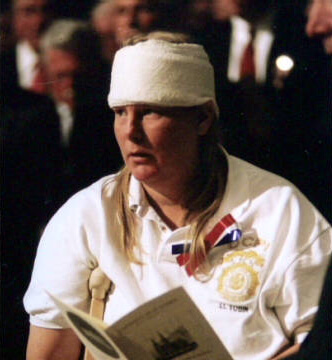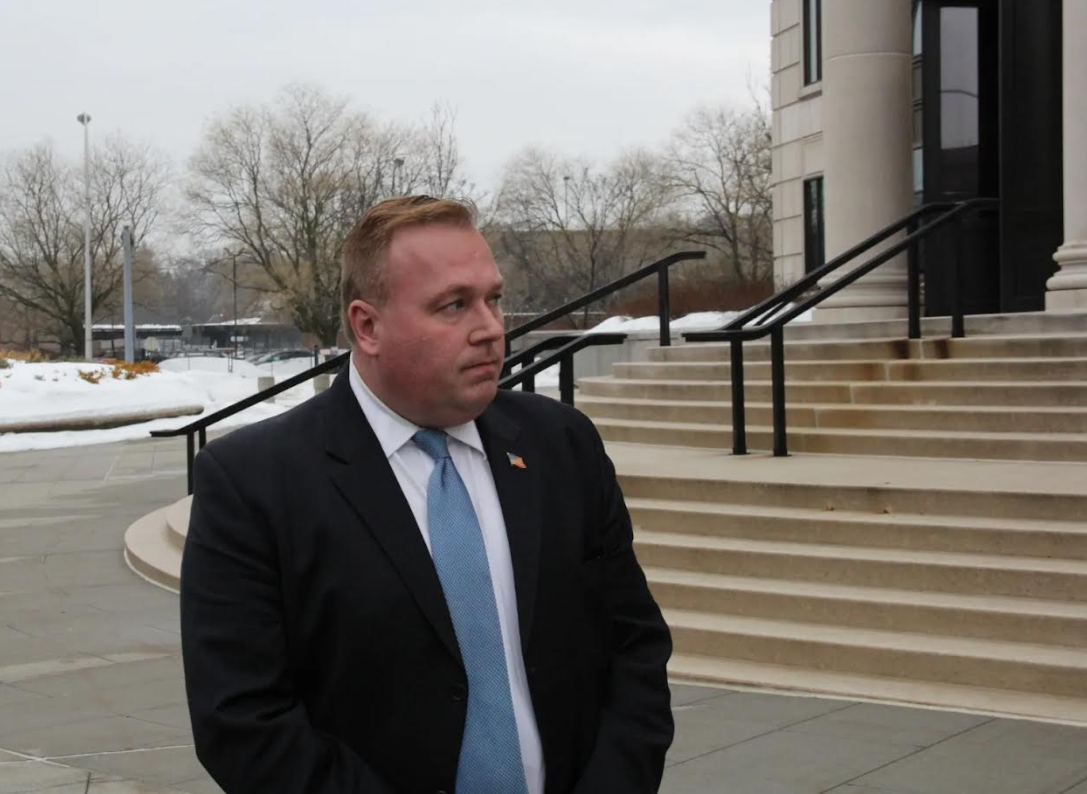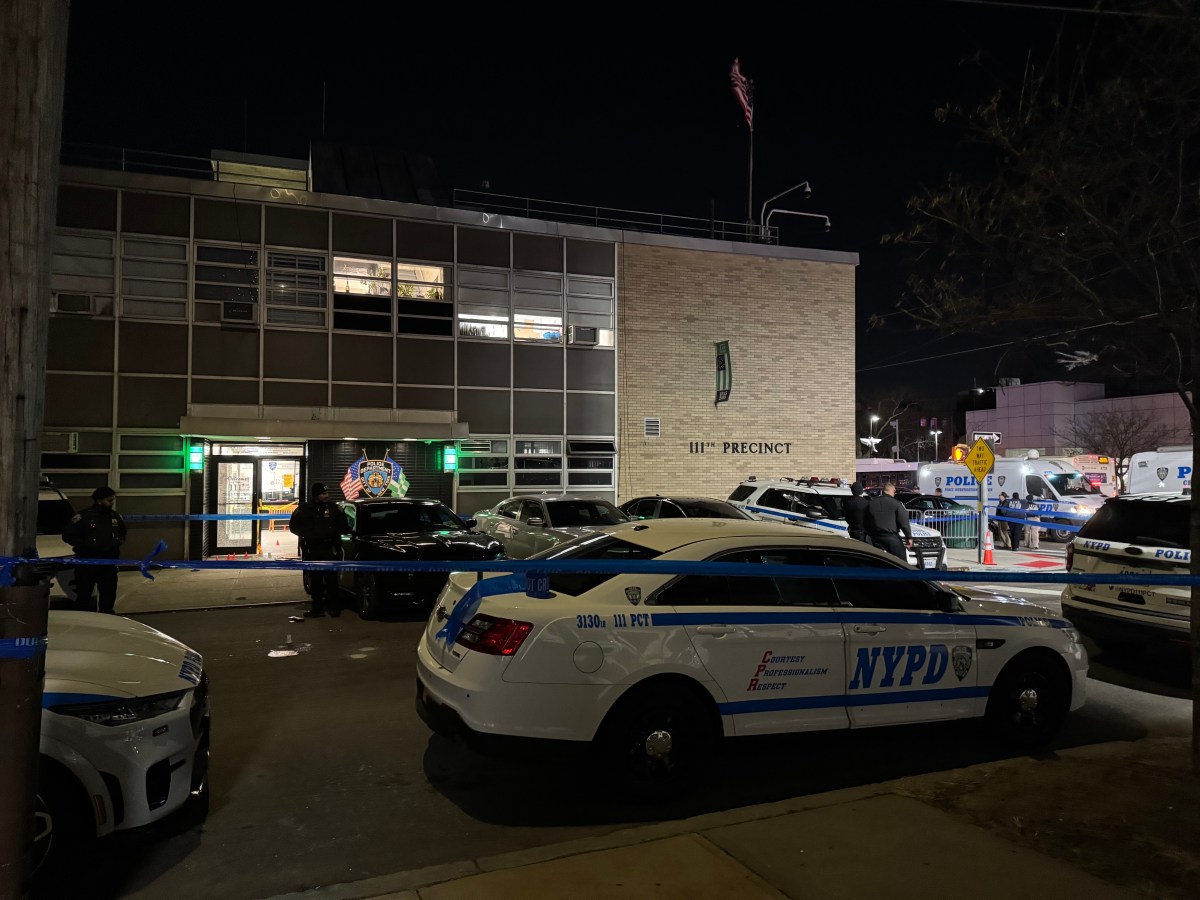Chief of Interagency Operations Theresa Tobin is the first and highest-ranking female to receive the NYPD Medal of Honor for risking her own safety to save individuals during the Sept. 11 terrorist attacks.
Like many others who reflect back 20 years ago on that particularly bright and sunny morning, for Tobin it began like any other Tuesday. She was designated to the DCPI office when a journalist informed the department that a plane had just struck the North Tower. She and a sergeant were assigned to the incident, which she initially presumed to be terrible accident.
“Going through the FDR Drive because instead of going across we went around the horn of Lower Manhattan to get to the site there was a phenomenal amount of paper floating through the air, but once we were present on the scene and saw the second plane come in, we knew that this was no accident,” Tobin said.
Standing on Greenwich Street, surrounded by billowing papers, debris, and chaos, Tobin admits that she had never experience such horror in her then 19 years of service. Despite the fear, officers and other first responders’ main priority was to remove those in danger from the building and general vicinity. As a part of her assignment at DCPI, her task focused on corralling the press and devising a location best fit to inform the media on the situation.
In addition, she sought to ensure individuals were leaving the Towers, not entering it in an attempt to capture the horrors.
As she traveled to the first tower, Deputy Commissioner Joe Dunn advised Tobin to don a ballistic helmet since word arrived that a third plane was flying into the area; however, this was military support aircraft.
“That one act of leadership by Joe Dunn saved my life. It was when the South Tower came down, and I was hit with debris, a piece of the cement and rebar on the building went through my ballistic helmet and split it in half and got imbedded in my skull,” Tobin said, saying that every year she contacts Dunn to thank him for saving her life.
While the South Tower was the second to be struck by a commercial plane, it was the first to fall. Tobin was pelted by concrete and pieces of metal, and as she was engulfed by white smoke and debris, a firefighter came to her aid. Both could hear the sounds of people screaming for help through the dense white clouds, and as they gazed up, they watched victims jump from the North Tower—choosing to die on impact rather than slowly burn or be crushed.
“We heard people screaming for help, and I have to say the images of those days are horrendous, watching people jump was really God awful. It was the only time in my career, and I think many police officers’ careers, where we responded to a scene that we were helpless. We knew that we couldn’t get people out,” Tobin said, reflecting on the first responders who went inside of these Towers with flames closing in behind them knowing the inevitable.
“People jumped in groups, holding hands. It was extremely difficult to witness,” Tobin said.
As she and the firefighter maneuvered through the carnage, attempting to aid anyone they could.
“What happened on 9/11 was that all matter of egress were closed off because it got people pinned inside with no way out, so we were able to pull several people out from underneath trucks, and no sooner I felt that happened. People were running toward us, telling us to get out again because the North tower was coming down,” Tobin said.
With a fractured ankle, blood pouring from her skull, and full of both fear and adrenaline pumping through her veins, Tobin pushed through and darted toward the Hudson River, believing that if she jumped, the water would absorb some of the debris.
“As I was running, I get whacked in my back and just go from a standing position to kneeling, but I was able to get up and continue to move. I knew I was not going to make it to the river,” Tobin said, stating that the rolling cloud of white smoke followed her as she sought shelter in an apartment building.
Smoke began to seep into the building, emitting from its elevator shaft, so Tobin ran toward the stairwell where individuals were fleeing dressed in all sorts of attire, pajamas, running gear, work clothes. She distinctly recalls seeing a mother holding a crying infant as the white smoke turned everything into a dark, dense grey cloud. Her first instinct was to help guide everyone out of the stairwell and through the front door in case the apartment building also collapsed.
Tobin explained as she arrived at the front door, she saw members of the Technical Assistance and Response Unit, (TARU). She shouted out to them and asked for help evacuating individuals from the building. They informed her that everyone in the area were being taken to boats off of Lower Manhattan toward New Jersey or Staten Island.
Standing there with a piece of cement protruding out of her head, a piece of glass between her shoulder blades and fractured ankle, members of TARU ushered her to the NYPD harbor team to Elis Island.
Once it was deemed safe enough, Tobin was transported to a hospital where she received immediate surgery. However, due to the blunt force trauma on her skull, she was unable to receive anesthesia. She had to be conscious for the surgery.
Looking back on Sept. 11, while the images remain embedded in her mind, that day feels recent and yet also distant. Tobin states that 23 officers died on 9/11, and an additional 269 since then and 82 cases that are currently pending. She estimates that about 400 officers died due to the Sept. 11 terrorist attacks as of 2021.
“In some ways it feels like yesterday, and in some ways, it seems so recent, like it was a just a faraway day,” Tobin said.
Read more: Ferry Captains Recall Hudson River Rescue



































